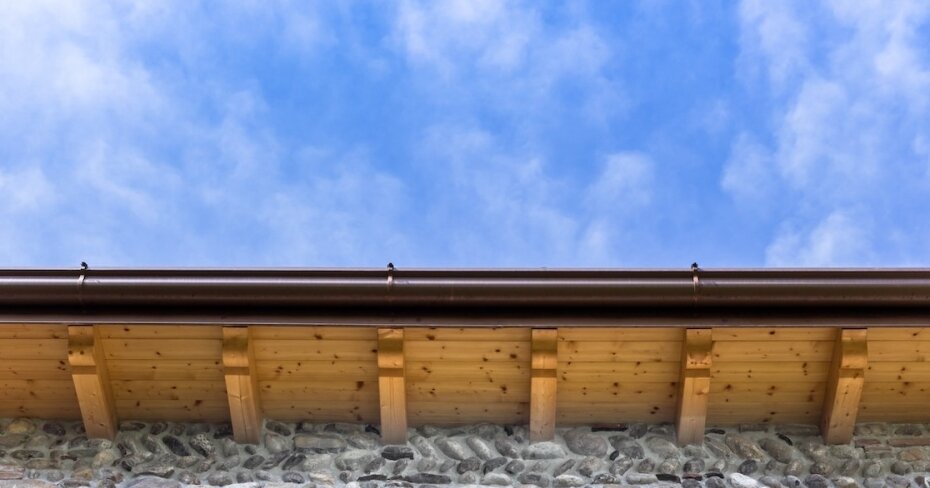Leaking roof? This is what your home insurance provider will want to know
By: Jonathan Ratner on February 20, 2019
It’s what every new homeowner fears most: unexpected damage to your property that prevents you from moving in. And it happened to me a week before the big day.
Everything was running smoothly last spring as our new house was being painted. My family was all packed up and ready for an easy move. That’s when an ice storm and heavy winds hit Southern Ontario, with the subsequent snow melt causing a rush of water to breach the roof (more specifically, a skylight).
Fortunately, our contractor was on site to mitigate a lot of the initial damage, but much of the ceiling, pot lights, wood floors, and carpets were beyond repair. Our insurance company would need to get involved.
“Water is the new fire, in the sense that insurance companies are now paying out more for water damage than they are for fire damage,” said Pete Karageorgos, director of consumer and industry relations at the Insurance Bureau of Canada.
Much of the ceiling, pot lights, wood floors, and carpets were beyond repair. Our insurance company would need to get involved
It would be days before my insurance company could send an adjuster to assess the damage, but they told me we could begin the cleanup and prepare for repairs. That gave me the peace of mind that at least some of my upcoming claim would be covered, but that’s also when things got tricky.
I was told that I would not be covered if the cause of the leak was a faulty or damaged skylight, while ice damming, which prevents melting snow from draining off a roof, was covered.
“It can sometimes be frustrating for homeowners because from an insurance company’s perspective, it may be a maintenance issue, and insurance is not a maintenance policy,” Karageorgos said.
Having your roof inspected regularly, keeping drains and eavestroughs clear, and making sure shingles are in place, are responsibilities of the homeowner, as is knowing what an insurance policy covers. There is no specific guidebook for how various claims are handled, but consumers (homeowners and renters) should review their policies often.
“People don’t have regular conversations with their insurance representatives,” Karageorgos said. “When you get a new policy or your renewal every year, sit down and go over your coverages, what you’re paying and getting, shop around if you need to, and spend the time and effort. Insurance is an investment, so you want to take the time and do it right.”
It can sometimes be frustrating for homeowners because from an insurance company’s perspective, it may be a maintenance issue, and insurance is not a maintenance policy
Insurance policies are contracts, and those contracts stipulate most of what events a homeowner is covered for. In some cases, specific events will be mentioned as being excluded, and if it’s not listed, you can presume it’s covered. Consumers also need to consider whether it’s worthwhile to make a claim, as insurance companies may decide after multiple claims that they don’t want to cover you anymore.
In my case, I was asked to provide a letter from a roofer indicating the problem was caused by ice damming. Fortunately, I was able to obtain one, but if I hadn’t, or if my insurance company’s emergency contractor assessing the damage didn’t agree, my claim could have been denied, leaving us on the hook financially.
“A lot of insurers want to see if it’s faulty workmanship,” said Nuno Torres, manager of Luso Roofing, which has been providing roofing services in the Greater Toronto Area for 20 years. “Shingles are often very old and haven’t been changed in a long time, or a flat roof is very old. These things shouldn’t be covered because they are not really weather related.”
If my insurance company’s emergency contractor assessing the damage didn’t agree, my claim could have been denied, leaving us on the hook financially
Homeowners can pay for a full inspection report to ensure they know the condition of their roof, but they must also do their due diligence on who to hire for the job — so a second opinion is always a good idea.
“Restoration companies are trying to make money sub-contracting the work out, but they are not always getting the highest-quality professionals out there,” Torres said. “Then homeowners are disappointed after the roof is still leaking.”
After a month in an Airbnb, my family was able to move into our home that now had new wood floors and fresh repairs to fix the damage caused by the leak. We get the roof checked frequently, and discussed our coverage in detail when our insurance policy was renewed. Before that, however, our insurance company wanted detailed receipts or invoices, along with photos, to show that the work was done in line with what they paid out. Make sure to have those organized when the work is being completed to save yourself a lot of hassle and stress.


